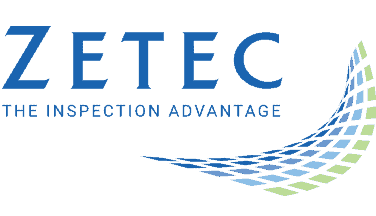Getting Eddy Current Testing of Evaporator and Condenser Vessels Right

Leaks are troublesome and dangerous in ships, shoes, sealing wax, secure conversations, and scientific research. But perhaps nowhere are they more troublesome than in the evaporator and condenser vessels of steam turbines.
Our world runs on electricity; steam turbines create much of that electricity. Coal, oil, and nuclear power plants are actually steam power plants—coal, oil, or radiation is used to heat water to steam, which turns turbines, generating electric fields. In order for this to work, there can’t be any leaks in the evaporator or condenser vessels for steam or water to escape through.
Finding these leaks can be a difficult process, even impossible for the naked eye. Steam can flee through smaller holes than you can see. Successful operations rely on skillful eddy current testing of evaporator and condenser vessels.
Dangerous Steam Leaks in Evaporator and Condenser Vessels
Leaks in evaporator and condenser vessels of steam turbines can cause serious harm to personnel and equipment. Steam is used to power turbines because of its unique expansion properties. On the low end, when water changes state to steam at 212℉, its volume expands by a factor of 1,700. When water is exposed to higher temperatures, such as in turbines, this factor increases. While these properties allow steam to efficiently turn turbines to create electricity, they also pose serious hazards for workers in the vicinity.
The steam tamed and put to work in steam turbines is necessarily both very hot and under high pressure. The pressure causes steam to move quickly and forcefully to areas of lower pressure—such as an open room on the other side of a pinhole leak.
The combination entails sudden, forceful streams of dangerous gas in the vicinity of workers. Unprotected workers can be seriously injured by unexpected steam releases. Steam pressure also exerts itself mechanically on the edges of the breach as it rushes through, widening it and worsening the problem until it is stopped.
Steam leaks can harm equipment as well. The burning of coal or oil, or the release of radioactive particles, is intended to heat water to transfer energy. Leaks in the evaporator or condenser vessels allow water loss. Without water, energy is still transferred, but not in a safe manner.
The excess heat radiates and conducts into the solid materials containing or otherwise present near the heat source, damaging and eventually destroying them. Safeguards do exist in each type of power plant to stop this damage before it develops into a catastrophe, but using them can be very expensive. Using them in response to a preventable issue, like a steam leak, can therefore be difficult to defend.
Using Eddy Current Testing on Evaporator and Condenser Vessels
Evaporator and condenser vessels are likely sources of leaks. Evaporators take steam away from the reaction chamber, where it will cool; condensers return it to be heated again. Leaks can be difficult to notice immediately, as they can be small enough to escape notice during visual inspection. At the same time, vessel tubing is often convoluted and obstructed by other equipment, making inspection access difficult. Under these conditions, undetected small leaks can worsen, becoming dangerous.
The best method for detecting leaks and the cracks, flaws, or defects which lead to leaks is using a nondestructive testing method known as eddy current testing. Eddy current testing using magnetic fields to visualize flaws and defects in conductive materials. Eddy currents can find issues that are invisible to the naked eye.
Basic bobbin probes typically used in eddy current inspections may be insufficient to detect all flaws and leaks in evaporator and condenser vessels, especially when vessels are obstructed. More advanced probes, such as the CXB4, which have powerful axial and circumferential flaw detection abilities, can mitigate this issue. When combined with advanced software, such as the Velocity software found on Zetec MIZ-200 eddy current instruments, these probes provide a full, accurate picture of cracks, flaws, defects, and leaks.
Leaking evaporator and condenser vessels can be costly, hazardous issues for power generation operations. Preventing and repairing leaks requires conscientious, regular usage of eddy current nondestructive testing. With the right probe, powerful software, and effective equipment, power generation companies can safely continue their normal operations.
Zetec has been a leading supplier of eddy current technology for decades. To learn more, contact us today!
